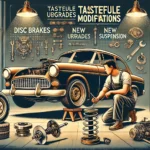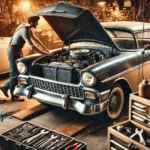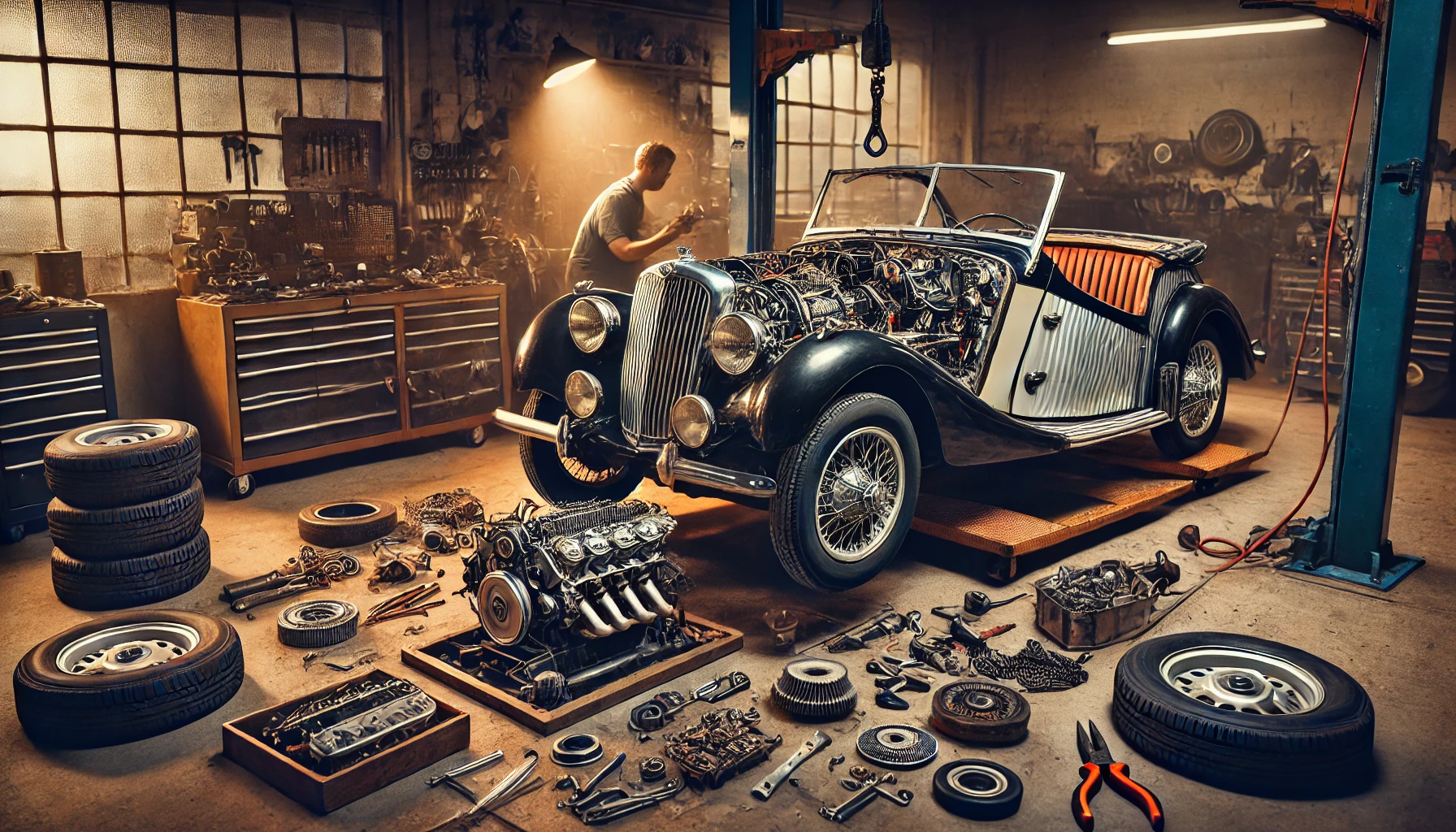Restoring a classic car is a rewarding journey that requires patience, skill, and dedication. Whether you want to bring an old beauty back to life for personal enjoyment or increase its value as a collectible, following a structured approach will make the process smoother. This step-by-step guide will help beginners navigate the exciting world of classic car restoration.
1. Choose the Right Classic Car to Restore
Not all classic cars are equal when it comes to restoration. Some are easier to work on, while others require extensive expertise and expensive parts.
- Consider Availability of Parts: Research how easy it is to find replacement parts for the model you choose.
- Check for Rust and Damage: Extensive rust or structural damage can significantly increase restoration costs.
- Determine Your Budget: Factor in the purchase price, restoration costs, and potential resale value.
- Decide on Full or Partial Restoration: Some classic cars may only need minor touch-ups, while others require complete overhauls.
Best Beginner-Friendly Cars for Restoration:
- Ford Mustang (1965–1970)
- Chevrolet Camaro (1967–1969)
- Volkswagen Beetle
- Chevrolet C10 Pickup
- Datsun 240Z
Pro Tip: If you’re new to restoration, start with a car that has a strong enthusiast community and readily available parts.
2. Plan Your Restoration Project
Before getting started, outline a clear restoration plan to stay organized.
- Set Goals: Are you aiming for a showroom-quality restoration, a daily driver, or a restomod (classic look with modern upgrades)?
- Create a Timeline: Restorations can take months or even years. Break it down into achievable phases.
- Prepare a Budget: Account for unexpected costs, as classic car restorations often exceed initial estimates.
- Find a Suitable Workspace: A garage with good lighting, ventilation, and enough space to work is ideal.
Pro Tip: Document your progress with photos and notes. This will help you track your work and increase the car’s resale value.
3. Disassemble the Car Carefully
Taking apart the vehicle is one of the most critical steps in restoration. Do it methodically to avoid losing parts or causing damage.
- Label and Store Everything: Use zip bags, boxes, and labels to keep track of nuts, bolts, and small parts.
- Take Photos: Photograph every component before removing it to serve as a reference during reassembly.
- Organize Hardware and Wiring: Keep a wiring diagram handy to ensure proper reinstallation.
Pro Tip: If a part is beyond repair, research replacements before discarding it. Some components can be refurbished rather than replaced.
4. Inspect and Repair the Frame and Body
The car’s frame and body structure play a crucial role in its integrity. Address these areas before moving on to aesthetics.
- Remove Rust and Corrosion: Sandblast or chemically treat rusted areas before applying a rust inhibitor.
- Repair or Replace Panels: Dents, holes, or major damage may require new panels or welding.
- Check Alignment: Ensure the car’s frame is straight before reassembling components.
Pro Tip: Rust-proof the vehicle using sealants and coatings to prevent future corrosion.
5. Restore or Replace the Engine and Transmission
The heart of a classic car is its engine. Decide whether to rebuild, replace, or upgrade it.
- Check Compression and Performance: If the engine is in decent shape, a rebuild might be enough.
- Replace Worn Components: Consider new pistons, bearings, gaskets, and seals for reliability.
- Upgrade for Reliability: If you plan to drive the car regularly, upgrading to modern ignition or cooling systems can improve performance.
Pro Tip: If you’re not confident in rebuilding an engine, consult an expert or buy a refurbished unit.
6. Restore the Suspension, Brakes, and Steering
Safety and handling are key, especially if you plan to drive the car frequently.
- Replace Brake Components: Install new pads, rotors, and lines to ensure stopping power.
- Inspect Suspension: Worn-out shocks and bushings should be replaced for a smooth ride.
- Check the Steering System: If the car has loose or unresponsive steering, replace the tie rods and steering box.
Pro Tip: Convert drum brakes to disc brakes for better performance without losing the classic feel.
7. Restore the Interior and Electrical Systems
Once the mechanical work is done, shift focus to the car’s interior and wiring.
- Reupholster Seats: Replace old fabric, leather, or vinyl for a fresh look.
- Replace or Restore the Dashboard: Cracked or faded dashboards can be restored with paint or upholstery.
- Upgrade Wiring and Lights: Check for faulty wiring and consider upgrading to LED lights for better visibility.
Pro Tip: Keep the original radio and gauges for authenticity, even if you install modern upgrades for convenience.
8. Paint and Final Touches
The final stage is making the car look brand new again.
- Choose the Right Paint: Stick with original colors for authenticity or customize it to your preference.
- Apply Multiple Layers: Use primer, base coat, and clear coat for a durable finish.
- Polish and Detail: Buff the paint for a showroom shine and clean every detail for a perfect finish.
Pro Tip: Hire a professional for painting if you lack experience. A bad paint job can reduce the car’s value.
9. Reassemble the Car
With everything restored, it’s time to put the car back together.
- Follow Your Documentation: Use labeled parts and reference photos to reassemble components correctly.
- Test Every System: Before driving, check the brakes, lights, steering, and engine performance.
- Fine-Tune Adjustments: Expect to make small tweaks after the first few drives.
Pro Tip: Take it slow—rushing reassembly can lead to mistakes or overlooked issues.
10. Enjoy and Maintain Your Restored Classic Car
Now that your car is fully restored, enjoy the fruits of your labor!
- Regular Maintenance: Keep up with oil changes, tire rotations, and inspections.
- Drive It Regularly: Running the engine and taking the car for drives will keep it in good condition.
- Join a Classic Car Community: Attend events, meet other enthusiasts, and showcase your work.
Pro Tip: If you plan to sell, keep detailed records of the restoration process—it adds value and credibility to the vehicle.
Final Thoughts
Restoring a classic car is a time-intensive but incredibly fulfilling experience. Whether you’re breathing new life into a vintage icon for personal enjoyment or investment, following these steps will ensure a successful restoration. With patience, planning, and the right resources, you’ll be able to turn a forgotten relic into a show-stopping masterpiece.








